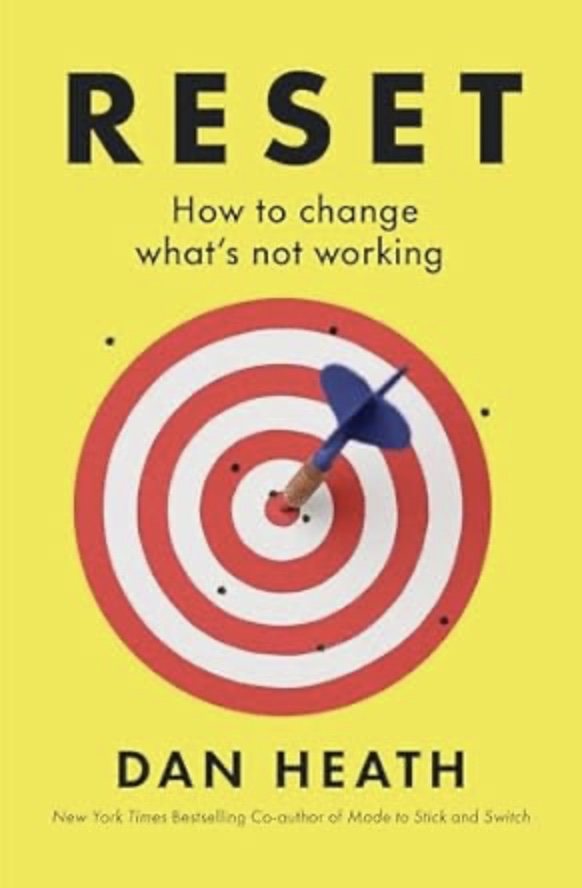Key Quote:
“When we can’t explain why something works, we can’t replicate it reliably. And when we can’t explain why something fails, we can’t fix it effectively.” (p. 26)
Key Points and Concepts
Part One: The Day
The Chick-fil-A Example: A Foundation for Reset
This book opens with Heath’s personal experience at a Chick-fil-A drive-thru during the pandemic. Despite 50 vehicles waiting, he received his order in under 10 minutes. This sparked his fundamental and thought-provoking question: “Why can Chick-fil-A accomplish something that every other fast-food chain struggles with?” (p. 26) The drive-thru’s remarkable efficiency wasn’t created through extra resources, but rather by pinpointing key bottlenecks and implementing focused solutions. Heath noticed that although customers technically waited longer at Chick-fil-A than competitors, satisfaction remained elevated because the experience felt different—it felt like continuous movement rather than unpredictable delays.
Implementing a Reset
Define the Problem Clearly: Before seeking solutions, Heath stresses the importance of pinpointing the real problem. This involves going beyond surface-level symptoms to understand the underlying constraints.
Go and See: Leaders must immerse themselves in the day-to-day operations to identify hidden inefficiencies, frustrations, and bright spots. As Heath emphasizes, “You can’t fix what you don’t understand.”
Map the System: Visualize how different parts of the organization interact, revealing bottlenecks and potential leverage points. This process helps leaders see the bigger picture and understand the ripple effects of any proposed changes.
Leverage First, Then Redirect
Find Leverage Points: Discover areas where minor adjustments can generate disproportionate improvements. Heath stresses “going and seeing the work” personally, instead of depending on assumptions or remote analysis. This typically involves recognizing constraints (bottlenecks) or “bright spots” (pockets of unexpected excellence) within a system. As Heath observes, “To reset a system, we need to identify its constraints. What’s holding it back?” (p. 91) and “Bright spots point us toward the possible.” (p. 60)
Restack Resources: After identifying leverage points, redirect time, energy, and assets toward these high-impact zones. This might require halting or scaling back low-value activities and investing more in what delivers results. Heath suggests, “Recycle waste. Don’t request more resources; reuse the ones you’ve already got.” (p. 119) and “Stop doing less and more. Stop doing things that don’t work; do more of what does.” (p. 245)
Key Strategies
Waste Reduction: Remove work that doesn’t contribute to the mission, such as unnecessary oversight or tasks that no longer generate value. Heath characterizes waste succinctly: “Waste is anything that doesn’t create value for the customer.” (p. 117) Not only does waste create zero value, but it also consumes precious resources.
Motivation and Autonomy: Tap into intrinsic motivation by connecting tasks with what energizes people, and grant them ownership over change initiatives. Heath underscores, “We need to let people drive. We need to tap into their intrinsic motivation.” (p. 215) Leaders must discover the intersection between organizational needs and what ignites employee enthusiasm.
Accelerated Learning: Implement quick feedback cycles and “early wins” to discover what succeeds and adapt swiftly, rather than relying exclusively on extended planning. Heath declares, “The single most important thing you can do to improve your work is to shorten the feedback loop.” (p. 167) This fosters enduring change by enabling teams to rapidly identify victories and setbacks and adjust accordingly.
Strategic Trade-offs: Employ techniques like the STOP-START-MORE-LESS evaluation to determine what to eliminate, what to expand, and where to channel resources for maximum impact. This helps executives escape resource limitations by concentrating on optimization and prioritization. Heath emphasizes that these aren’t just theoretical exercises but practical decision-making tools that force clarity about priorities.
Application for Leaders
For senior executives, “Reset” delivers a methodology to overcome organizational resistance—what Heath describes as “the gravity of the way we’ve always done things.” The book acknowledges the distinctive challenges leaders face: they possess a broad system view but may lack connection to frontline realities.
Heath’s insights on cross-functional teamwork are especially valuable. The radiology clinic illustration shows how uniting diverse viewpoints for concentrated “bursts” of intense effort can breakthrough longstanding obstacles. This approach helps executives sidestep the common leadership pitfall of prolonged, unfocused transformation efforts.
For executives seeing diminishing returns from conventional change management, Heath’s system mapping technique offers a fresh angle. Instead of addressing symptoms, “Reset” guides leaders to visualize complete systems, revealing hidden connections and leverage points that others overlook.
The book also tackles the executive challenge with burnout—both individual and organizational. By helping leaders separate urgent from important work, Heath offers a sustainable path to transformation that avoids the exhaustion often accompanying change initiatives.
As Heath concludes, “The goal of a reset is not just to get better but to get unstuck.” (p. 272). From his perspective, a true reset isn’t just about incremental improvements, but about fundamentally overcoming obstacles, allowing senior leaders to consider how they might unlock significant progress—achieving what truly matters—even without additional resources, simply by better leveraging their existing people and assets.impressive about them (p. 216).
Dan Heath (2024). Reset: How to Change What’s Not Working. New York: Simon & Schuster.

“When we can’t explain why something works, we can’t replicate it reliably. And when we can’t explain why something fails, we can’t fix it effectively.” (p. 26)
“Define the Problem Clearly: Before seeking solutions, Heath stresses the importance of pinpointing the real problem. This involves going beyond surface-level symptoms to understand the underlying constraints.”
“For senior executives, “Reset” delivers a methodology to overcome organizational resistance—what Heath describes as “the gravity of the way we’ve always done things.” The book acknowledges the distinctive challenges leaders face: they possess a broad system view but may lack connection to frontline realities.”
